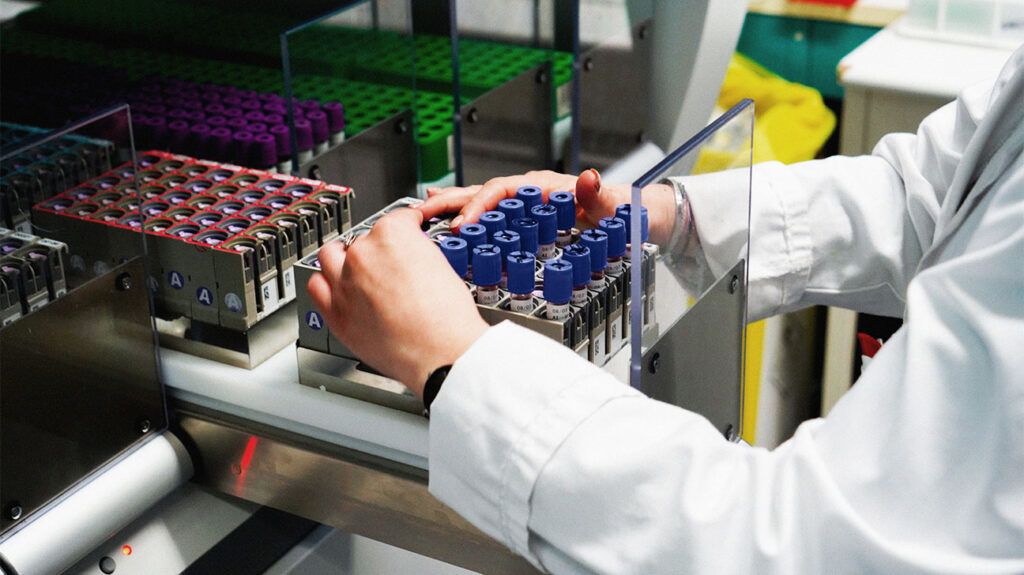In normochromic anemia, which is a type of blood disorder, red blood cells have typical concentrations of hemoglobin and are typical in color. It may result from underlying conditions, and treatment depends on the cause.
Diagnosing normochromic anemia requires a thorough assessment, often including a blood test called a complete blood count.
Treating anemia often involves a tailored approach according to the underlying cause. Interventions may include dietary adjustments, supplements, or medications. In severe cases, blood transfusions to address specific deficiencies or conditions may be necessary.
This article explains the normochromic anemia subtype and discusses prevention, diagnosis, treatment options, and more.

The following symptoms are general and can relate to various types of anemia:
- fatigue, or feeling weak and tired
- reduced endurance
- shortness of breath
- pale or pallid complexion
- dizziness
- headache
- chest pain
- restless legs
- pica, or the desire to eat nonfood items
It is important to note that symptoms of normochromic anemia can vary according to the underlying cause and the severity of the condition.
Anemia is a blood disorder classification. It occurs when the body does not have enough red blood cells (RBCs) or when the RBCs do not function properly. Normochromic anemia is a specific subtype of anemia.
With normochromic anemia, RBCs contain the typical amount of hemoglobin, which is the protein that helps blood carry oxygen throughout the body, but there are not enough of them.
Normochromic anemia can arise from various underlying
- Bone marrow failure: This may result from damaged stem cells in the bone marrow, which can affect the production of RBCs.
- Chronic blood loss: This may be due to gastrointestinal issues or other causes.
- Excessive hemolysis: This is where the body breaks down RBCs faster than it can replace them.
- Chronic or long-term medical conditions: These may include autoimmune diseases, chronic infections, and certain cancers.
To diagnose anemia, doctors will conduct the following steps and tests on a person:
- a medical and family history
- a physical examination to assess signs of anemia
- blood tests, such as a CBC, which evaluates RBC levels and hemoglobin concentrations
A doctor may also order a blood test to analyze the size and shape of red blood cells, which can help them identify potential abnormalities.
If doctors diagnose anemia, they may order further tests to determine the underlying cause. Sometimes, they may recommend taking a bone marrow sample to identify factors contributing to the anemia.
After diagnosing anemia, a doctor may discuss the following treatments:
- nutritional interventions to address deficiencies in iron, vitamin B12, and folate
- managing chronic health conditions through medications and lifestyle changes
- targeted therapies, such as erythropoiesis-stimulating agents, which stimulate bone marrow to increase RBC production
Healthcare professionals typically reserve blood transfusions for cases of severe anemia where a person is actively bleeding or experiencing weakness, shortness of breath, or chest pains. Blood transfusions can temporarily correct the RBC deficiency, but they do not correct the problem.
Some forms of anemia are unavoidable. However, eating a nutritious diet can help prevent both iron and nutritional deficiency anemia. A person can include foods containing the following nutrients:
- Iron: Red meat, dark green leafy vegetables, lentils, dried fruits, and nuts
- Vitamin B12: Meat, eggs, fish, and dairy products
- Folic acid: Citrus juices, dark green leafy vegetables, legumes, and fortified cereals.
People need to consult a healthcare professional before taking a multivitamin or iron supplement to prevent anemia.
Learn about iron deficiency anemia and genetics.
The
Dietary changes may be enough to prevent or manage anemia for some people. Others may need supplements or other interventions. Certain types of anemia can be life threatening without treatment.
Below are answers to some common questions about normochromic anemia.
What is the difference between normochromic and hypochromic?
Normochromic refers to typical-colored RBCs. Hypochromic describes cells with a paler color, often indicating lower hemoglobin levels.
Typically, hypochromic anemia indicates that RBCs are less able to carry oxygen. The condition may be due to iron deficiency or certain chronic diseases.
Is B12 deficiency anemia normochromic?
Yes, B12 deficiency anemia is a normochromic anemia. It is also a macrocytic anemia, meaning the RBCs are oval-shaped and larger than natural.
Learn more about B12 deficiency.
Is pernicious anemia normochromic or hypochromic?
Pernicious anemia occurs due to a deficiency in vitamin B12 absorption and is both normochromic and megaloblastic. Megaloblastic anemia is a subtype of macrocytic anemia that includes atypical megaloblasts in the bone marrow. Megaloblasts are precursors to red blood cells.
When a person’s anemia is normochromic, their red blood cells feature a typical color and hemoglobin levels.
Treatments typically focus on addressing underlying causes through nutritional interventions and targeted therapies. While not all anemias are preventable, a diet rich in iron, vitamin B12, and folate may help boost overall blood health.
